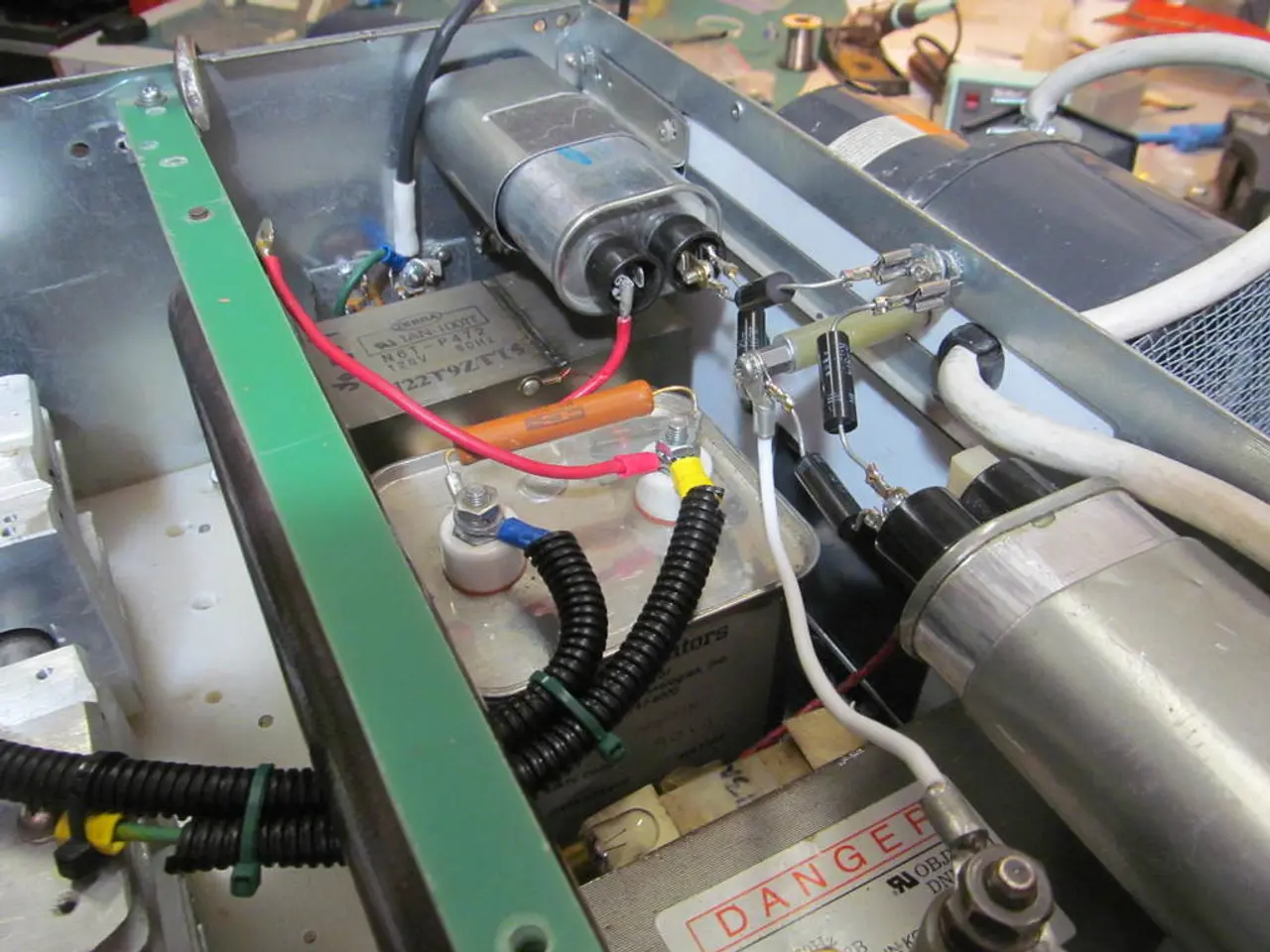Solar Technologies Advance Soil Restoration
Solar-powered remediation is revolutionising the way we clean up contaminated soil, offering a more sustainable and energy-efficient approach. By utilising solar energy to drive the processes and equipment involved in soil remediation, these technologies are streamlining project development, reducing costs, and promoting long-term soil health improvements.
How They Work
Solar-powered remediation employs various methods, including photovoltaic-enhanced phytoremediation, solar-powered bioremediation systems, solar thermal remediation, and solar-powered mechanical extraction and monitoring.
- Photovoltaic-enhanced phytoremediation harnesses solar power to optimise plant growth that absorbs contaminants from the soil, thereby supporting plant-based cleanup while using renewable energy for associated equipment.
- Solar-powered bioremediation systems utilise solar energy to power air blowers, pumps, and monitoring devices, improving conditions for microorganisms that degrade pollutants.
- Solar thermal remediation focuses sunlight using mirrors or fiber optics to generate heat (>400°C) required to thermally degrade or ignite contaminants in soil.
- Solar-powered mechanical extraction and monitoring uses solar arrays to run air sparging pumps, soil vapor extraction systems, and environmental sensors, enabling active extraction or monitoring of contaminants from soil and groundwater.
Benefits
The benefits of solar-powered remediation are numerous:
- Renewable and sustainable energy source: Reducing reliance on fossil fuels and grid electricity, decreasing greenhouse gas emissions related to remediation.
- Energy cost savings and offset: Solar arrays can offset significant energy demands, sometimes providing 100% of electricity for remediation systems, making projects more economical.
- Enables innovative remediation methods: Like solar thermal remediation, which was previously impractical without renewable heat sources.
- Environmental co-benefits: For example, phytoremediation produces biomass and can restore site ecology while cleaning soil.
- Mobility and flexibility: Solar-powered setups can be relocated or scaled as remediation needs change on complex sites.
Challenges
Despite the advantages, solar-powered remediation faces some challenges:
- Initial capital costs: Installing solar panels and associated infrastructure require upfront investment.
- Maintenance: Solar systems need ongoing upkeep including pest control, cleaning panels, and repairs, which can be costly and labor-intensive.
- Technology lifecycle and recycling: End-of-life photovoltaic panels pose recycling challenges that must be addressed to maintain sustainability.
- Site-specific limitations: Solar availability fluctuates by location, weather, and season, which can impact reliability and power output critical for remediation processes.
Future Innovations
Emerging innovations promise to address these challenges and enhance the efficiency, flexibility, and environmental benefit of solar-powered remediation:
- Improved solar panel durability and recyclability: To decrease environmental impact and lifecycle costs.
- Integration with smart monitoring and AI: For real-time optimisation of soil remediation powered by solar energy.
- Advanced photothermal systems: Increasing energy concentration efficiency, enabling more challenging contaminant destruction.
- Hybrid systems: Combining solar power with other renewable sources or storage for continuous operation despite solar intermittency.
- Dual-purpose technologies: Inspired by space research that extract contaminants while generating useful byproducts or supporting soil health, leveraging solar photothermal energy.
In conclusion, solar-powered soil remediation technologies are transforming the way we approach contaminated sites, offering a more sustainable and economical solution. Despite the challenges, emerging innovations promise even greater efficiency, flexibility, and environmental benefit in the future. The convergence of solar technology and environmental remediation embodies the future of sustainable development where renewable energy becomes the foundation for healing our planet.
- Solar-powered remediation techniques like photovoltaic-enhanced phytoremediation and solar-powered bioremediation systems utilize solar energy to promote plant growth and support microorganisms that degrade pollutants, respectively.
- Solar thermal remediation uses mirrors or fiber optics to focus sunlight and generate high temperatures (>400°C) for thermally degrading or igniting contaminants in soil.
- Solar-powered mechanical extraction and monitoring relies on solar arrays to run pumps, sensors, and equipment used for active extraction or monitoring of contaminants from soil and groundwater.
- By using renewable energy sources, solar-powered remediation contributes to energy cost savings, reducing greenhouse gas emissions related to remediation and promoting energy independence.
- Solar-powered setups are mobile and flexible, enabling relocation or scaling as remediation needs change on complex sites.
- However, initial capital costs, maintenance requirements, technology lifecycle considerations, and site-specific limitations can pose challenges to the widespread implementation of solar-powered remediation.
- Innovations in solar panel durability, smart monitoring and AI integration, advanced photothermal systems, hybrid energy systems, and dual-purpose technologies are being developed to address these challenges.
- Improved solar panel durability and recyclability can help decrease environmental impact and lifecycle costs.
- Integration with smart monitoring and AI can optimize soil remediation powered by solar energy in real time.
- Advanced photothermal systems can increase energy concentration efficiency, enabling more challenging contaminant destruction.
- Hybrid systems can combine solar power with other renewable sources or storage for continuous operation despite solar intermittency.
- Dual-purpose technologies inspired by space research can extract contaminants while generating useful byproducts or supporting soil health, leveraging solar photothermal energy for clean energy production and environmental benefits.




